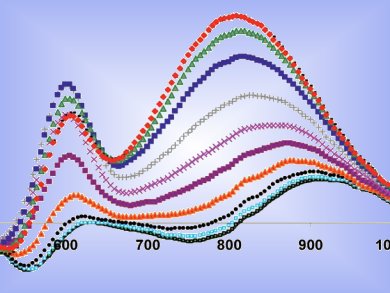The mechanisms by which vanadium compounds mediate antidiabetic effects in vivo are not well understood, but they appear to involve interference with the activity of several tyrosine kinases. Dipeptides containing tyrosine (Tyr) may bind VIV, and the presence of a suitable anchor donor in the ligand may enhance this binding ability by extending the binding to the low- and high-pH range.
João Costa Pessoa, TU Lisbon, Portugal, Tamás Kiss, University of Szeged, Hungary, and co-workers report the preparation of the reduced Schiff bases of salicylaldehyde and pyridoxal with L-Tyr and o-tyrosine. These are much more stable than the corresponding Schiff bases. Studies of complexation with oxovanadium(IV) in aqueous solution show that mainly 1:1 (ligand/metal) complexes form. The VIVO complexes with ligands derived from o-Tyr are more stable than those with L-Tyr, and, in the pH range 3–11, approximately 100 % of VIVO is bound to ligands derived from o-Tyr.

Images: (c) Wiley-VCH
- Vanadium(IV) and -(V) Complexes of Reduced Schiff Bases Derived from Aromatic o-Hydroxyaldehydes and Tyrosine Derivatives
I. Correia, S. Marcão, K. Koci, I. Tomaz, P. Adão, T. Kiss, T. Jakusch, F. Avecilla, J. Costa Pessoa,
Eur. J. Inorg. Chem. 2011.
DOI: 10.1002/ejic.201000948




